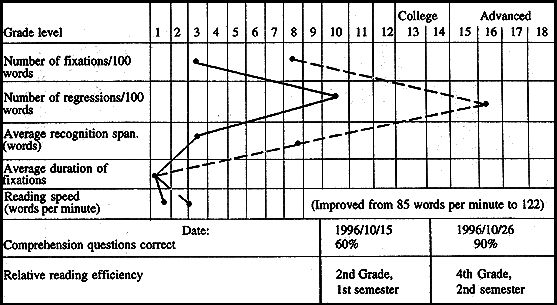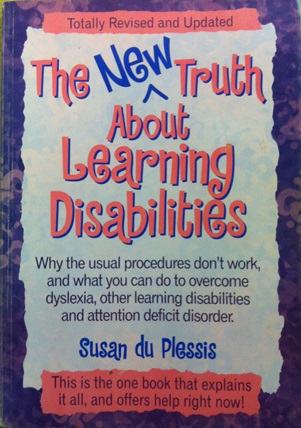 The case study below appeared in The Truth about Learning Disabilities (Revised edition), 1997, by Susan du Plessis:
The case study below appeared in The Truth about Learning Disabilities (Revised edition), 1997, by Susan du Plessis:
There were only seven weeks left until school year-end [December] and five weeks before examination when Yolandi Smith’s parents enquired about Audiblox.
Yolandi’s parents were hoping for a miracle. She has already failed 1st Grade before and there was no chance that she would pass 4th Grade. She had already been earmarked for special school placement in 1997 by the school psychologist. Special education had also been recommended by a private counseling psychologist, who had assessed Yolandi on October 1, 1996.
In their search for a solution, Yolandi’s parents had tried various solutions. Nothing seemed to work, however, and they were crossing their fingers that an intensive Audiblox course would do the trick. She had failed the second and third term of 4th Grade and these marks, which were extremely low, were to count 80% of her final promotion mark. Fortunately, Yolandi’s school principal was most co-operative. He agreed not to include these marks in the calculation of her final mark. She now had a small chance to make the grade.
On October 12, Yolandi’s IQ was assessed. She scored 92 on the verbal section and 90 on the non-verbal section. Her total IQ score was 90. She really needed a miracle!
For two weeks, starting on October 14, Yolandi’s father trained her on Audiblox. Twenty minutes of every half-hour session was spent on Audiblox exercises, and the remaining ten minutes on reading. They did ten lessons per day.
On the second day of instruction, Yolandi’s reading was tested by means of an ophthalmograph or eye-camera. Nine days later, at the end of the ten days’ intensive course, it was tested once again. The retest showed an almost miraculous improvement in her reading efficiency! In the diagram below the solid line represents the results of the first reading test and the dashed line those of the second:

(See the explanation of the ophthalmograph below.)
After the two weeks intensive course Yolandi returned to school, while her father continued to do Audiblox with her in the afternoons. Considering the short time that had been available for intervention, Yolandi’s examination results came as a great relief to everybody concerned. Compared to her previous marks, her average improved by 11%, making her eligible for 5th Grade in 1997.
Of course, to solve her problems completely, Yolandi would have to continue with Audiblox on a regular basis for some time. Although exceptional results can be and have many times been obtained through its use in a variety of situations, it is equally true that Audiblox is no miracle cure. Rome was not built in a day, but if one is prepared to lay a brick every day, seeming miracles can be achieved in time.
| The Eye-Camera and its Application At the time when The Truth about Learning Disabilities was published the eye-camera was still a very popular instrument to assess reading ability. The eye-camera measures the time it takes a person to read a piece of text, and from this his reading speed per minute is calculated. The movements of the person’s eyes are photographed and represented on a reading graph. This reading graph can be analyzed to determine the number of eye fixations that occurred during reading. When a person reads, his eyes engage in a series of quick movements across the page with intermittent fixation pauses. The more often the eyes have to pause for fixations, the slower the reading speed will be. A dyslexic person will be inclined to pause more often, and the duration of each fixation will be longer than that of the typical reader. After this, it is possible to calculate the person’s recognition span. This refers to the average number of words the person can recognize in one fixation, as well as to the average duration of such a fixation. By analyzing the reading graph one can also determine whether any regressions occurred in the eye movements of the reader. A regression occurs when the eyes moves toward the left to look again at words that had been covered already. The dyslexic person is inclined to have more regressions than the normal reader. After reading the piece of text, the person doing the test is required to answer a number of questions on the contents. This is to determine his comprehension, which is expressed in a percentage. Lastly, the relative reading efficiency can be calculated, which is expressed in year levels. |






